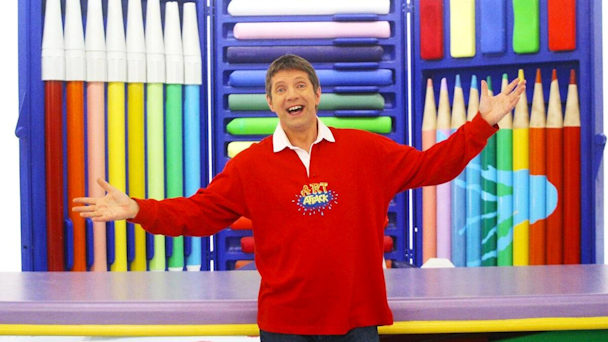How CITV’s departure from linear TV reflects a wider shift in children’s media
Jennifer Batty, European head of content acquisition at Samsung Ads, explains why it isn’t such a bad thing that one of the UK’s biggest children’s TV channels has gone exclusively online.

How CITV’s departure from linear TV reflects a wider shift in children’s media
I grew up in Canada watching The Adventures of Black Beauty, Paddington and Sesame Street, often with my parents enjoying the content along with me. I can’t help but feel a nostalgic sadness at the news that CITV – which formed a major part of many childhood viewings – will now stop broadcasting, with most children’s content moving online. Coming from a British family, I know that many of them feel the same. However, nostalgia aside, this makes great sense for the broadcaster.
A chance to invest in a new generation
Britain has a brilliant legacy in children’s telly. The UK’s most iconic broadcasters have demonstrated unflinching dedication to delivering fun, educational, silly and safe entertainment to the younger generations since the launch of the first children’s programmes on the BBC in 1946. There’s no need for the shift online to see this dedication wane. In fact, in today’s environment of endless content catalogues spread across numerous content providers, this noble aim is more important than ever. Aside from the altruistic objective of entertaining our young people, a focus on this area builds brand loyalty in the early stages.
The reality is, children are still watching ‘TV content’ - just not always linear TV. Ofcom found that in 2022 78% of UK children watch TV streaming services versus 47% watching live TV. Accepting that kids find content online might be the push needed so ITV can rejuvenate the kids’ sector by offering a premium digital experience. However, while moving to streaming isn’t on its own a reason for concern, ITV has not yet indicated it will commit to continuing its significant investment in the sector. I hope that ITV embraces the opportunity to deliver kids with the excellent content they have been producing for years, acknowledging that they are simply watching it differently.
Advertisement
A commitment to delivering safe online spaces
ITV pointed to BARB’s figures showing that four-to-15-year-olds watched 62% less broadcast (linear) TV minutes per day since 2019 as justification for its move.
We know that kids are spending more time behind screens than ever before. It’s not that they’re after less entertainment, it's just that they’re finding it elsewhere. User Generated Content (UGC), in particular, is seeing its popularity soar. But try as they might, platforms cannot guarantee that inappropriate and dangerous content won’t pop up after a few strategic clicks from little fingers.
The amount of inappropriate content children are being exposed to is alarmingly high, the children’s commissioner for England reported last year that 45% of children aged eight to 17 had come across content they felt was inappropriate. This is overwhelmingly in online channels where UGC reigns supreme. As ITV joins ranks with the BBC in announcing their kids’ content would be moving online, I’d like to see parents being offered a range of online spaces where their children can enjoy safe and appropriate entertainment.
Advertisement
Standing out in an era of content overload
This migration isn’t going to be plain sailing. Delivering a popular, successful online service to children means cutting through all the noise. ITV faces an uphill battle getting its content to stand out among the surplus of alternative options.
The broadcaster, however, isn’t starting from scratch. Leaning into the best-in-class recipe that has previously made it resonate with kids and parents alike is the first step towards success. This means staying faithful to educational and fun programmes. Dangerous content is a worry for parents – but so is the fear of children spending hours in front of shows that are not worth their while.
ITV has an opportunity to deliver a premium service that caters to parents’ need for their children to watch content that enriches their lives. Popping a nine-year-old in front of an ITVX-owned, single IP, free, ad-supported streamed TV (FAST) channel targeted at ages six-to-eight, for example, is a pretty surefire way to ensure they are shown age-appropriate, engaging entertainment without the worry that a more advanced age show will appear on the screen.
Suggested newsletters for you
Getting the family (TV moment) back together
The content boom, driven by the cataclysmic arrival of streaming, has torn up the rule book for the meaning of the family TV moment. Leveraging its focus on children’s programming can be the catalyst for ITV to redefine this evening institution and bring the family back together behind one screen. With such a range of content available online and more screens than ever to access, family members glued to their screens around the living room is a familiar sight across the nation. If ITV invests in shiny new kids offering, it may find itself brilliantly poised to reignite the family bonding experience that broadcast TV has been so pivotal in creating - but for the digital-dominated era.
Ensuring audiences keep faith in its service, rather than one of the many alternatives, isn’t a surefire guarantee for the broadcaster. But with consumers’ viewing behaviours shifting – and CTV penetration increasing – streamed content is becoming a staple of modern viewing experiences. And while the existing CITV model has been falling short in keeping kids engaged, I believe that it can successfully traverse this exciting migration to an online offering.
